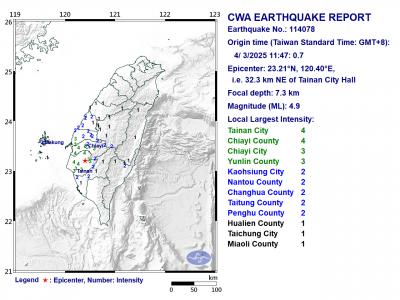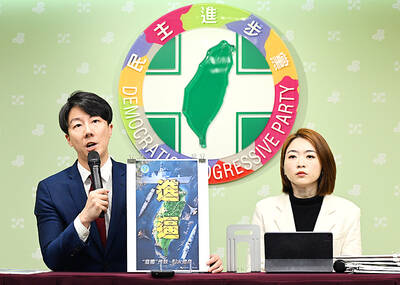An extensive new study finds that China is actively undermining democracy at home and abroad and conducting an “organized, sophisticated and well-resourced” campaign to subvert organizations that promote human rights.
Along with Russia, Iran, Venezuela and Pakistan, the study says that China serves as a “model of authoritarianism for the 21st century.”
Entitled Undermining Democracy the study has been produced by Freedom House — a US-based international non-governmental organization that researches democracy, political freedom and human rights — and was released on the 20th anniversary of the 1989 Tiananmen Square crackdown.
There are five key findings.
By doling out billions of dollars in no-strings-attached foreign aid, China and the other four regimes are hobbling international efforts to improve governance and reduce corruption; they are disrupting the human rights and democracy work of international bodies such as the UN; they are tarnishing the public understanding of democracy by distorting its meaning through well-financed international media ventures; they are stopping legitimate online political debate; and they are distorting history and creating a new generation that is hostile toward democracy and suspicious of the outside world.
Libby Liu (劉仚), president of Radio Free Asia and one of the analysts involved in the study, said: “China has modernized its strategy of suppression.”
“The sophistication of media management by the Chinese authorities, including market-based censorship combined with more traditional methods of intimidation, suggests a system that is both repressive and resilient,” she said.
image
According to the study, China’s state-controlled news organizations plan to spend billions of dollars on expanding overseas media operations in a bid to improve the country’s image abroad by opening more overseas bureaus, publishing more content in English and other languages and hiring English-speaking Chinese and foreign media specialists.
It says: “China is ruled by the CCP hierarchy, which has both enriched itself and maintained the necessary degree of public support by opening up new fields of economic and commercial activity.”
“Paradoxically, the party has won praise as the guarantor of national prosperity simply by removing its own long-standing restrictions, allowing the Chinese people to climb out of the crushing poverty and social devastation that had resulted from decades of CCP rule. China’s rise has been so dramatic precisely because its starting point was so low,” it says.
The study argues that Beijing has burnished its image by the “studious repression of critical voices.”
It adds that the CCP has “seriously distorted” Chinese history by practicing censorship, twisting textbooks, producing inaccurate television documentaries and promoting false museum exhibits.
“Ongoing and growing problems — pollution, human rights abuses, galloping corruption and social unrest stemming from basic injustice — are largely papered over through the same mechanisms of repression and media control,” the study says.
But it concludes that on the domestic front the CCP is more frightened of its own citizenry than most outside observers realize.
“The top priority of the CCP remains today what it always has been: maintaining absolute political power,” the study says.
It continues: “No other goal — be it economic, military, diplomatic or nationalistic — trumps this aim. Indeed, the recent economic downturn is of great concern to the CCP precisely because it threatens the party’s hold on power.”
Among the population at large, there is a “fear-induced self-censorship.”
The study explains: “In Mao’s day, expression had to stay within certain bounds, while everything outside was forbidden.”
“Today, one can explore anything beyond certain forbidden topics: the 1989 Tiananmen Massacre, the Falun Gong movement, the China Democratic Party, Taiwan independence, Tibetan or Uighur autonomy, the Great Leap famine, corruption among top leaders and certain other incorrect views on national or international affairs,” it adds.
Young Chinese today, says the study, may be well educated in mathematics, engineering, or languages and yet live with badly warped understandings of their nation’s past.
“Even worse, they could remain entirely unaware of how they have been cheated,” the study says.
Textbooks stress that certain people in Taiwan want to “split the motherland” and the true history of the Mao era — including the histories of Tibet, Taiwan, World War II and the CCP itself — is routinely omitted.
The study says: “The CCP sometimes fabricates or exaggerates national-level fears precisely for the purpose of distracting attention. Most Chinese people, left to themselves, care much more about their own daily lives than about distant places like Taiwan or Tibet. They wake up in the morning worried more about a corrupt local official than about the Dalai Lama.”
propaganda
“But when CCP propaganda tells them repeatedly that the wolf-hearted Dalai Lama is splitting the motherland, they tend to embrace the view that it is bad to split the motherland and that the CCP is the standard-bearer in opposing the splitting,” it says.
“The stimulation of a fear that did not previously exist has less to do with actual danger than with the CCP’s need to strengthen its popular image and divert attention from popular complaints. In recent years the CCP has used incidents involving Japan, Tibet, Taiwan and the United States for this purpose. In the case of Tibet there is evidence that the triggering incidents themselves have been manufactured for the cause,” it says.

A magnitude 4.9 earthquake struck off Tainan at 11:47am today, the Central Weather Administration (CWA) said. The hypocenter was 32.3km northeast of Tainan City Hall at a depth of 7.3km, CWA data showed. The intensity of the quake, which gauges the actual effect of a seismic event, measured 4 in Tainan and Chiayi County on Taiwan's seven-tier intensity scale, the data showed. The quake had an intensity of 3 in Chiayi City and County, and Yunlin County, while it was measured as 2 in Kaohsiung, Nantou County, Changhua County, Taitung County and offshore Penghu County, the data showed. There were no immediate reports of

‘DENIAL DEFENSE’: The US would increase its military presence with uncrewed ships, and submarines, while boosting defense in the Indo-Pacific, a Pete Hegseth memo said The US is reorienting its military strategy to focus primarily on deterring a potential Chinese invasion of Taiwan, a memo signed by US Secretary of Defense Pete Hegseth showed. The memo also called on Taiwan to increase its defense spending. The document, known as the “Interim National Defense Strategic Guidance,” was distributed this month and detailed the national defense plans of US President Donald Trump’s administration, an article in the Washington Post said on Saturday. It outlines how the US can prepare for a potential war with China and defend itself from threats in the “near abroad,” including Greenland and the Panama

The Chinese Nationalist Party (KMT) is maintaining close ties with Beijing, the Democratic Progressive Party (DPP) said yesterday, hours after a new round of Chinese military drills in the Taiwan Strait began. Political parties in a democracy have a responsibility to be loyal to the nation and defend its sovereignty, DPP spokesman Justin Wu (吳崢) told a news conference in Taipei. His comments came hours after Beijing announced via Chinese state media that the Chinese People’s Liberation Army’s Eastern Theater Command was holding large-scale drills simulating a multi-pronged attack on Taiwan. Contrary to the KMT’s claims that it is staunchly anti-communist, KMT Deputy

RESPONSE: The government would investigate incidents of Taiwanese entertainers in China promoting CCP propaganda online in contravention of the law, the source said Taiwanese entertainers living in China who are found to have contravened cross-strait regulations or collaborated with the Chinese Communist Party (CCP) could be subject to fines, a source said on Sunday. Several Taiwanese entertainers have posted on the social media platform Sina Weibo saying that Taiwan “must be returned” to China, and sharing news articles from Chinese state media. In response, the Mainland Affairs Council (MAC) has asked the Ministry of Culture to investigate whether the entertainers had contravened any laws, and asked for them to be questioned upon their return to Taiwan, an official familiar with the matter said. To curb repeated